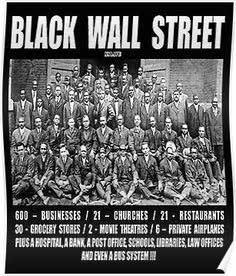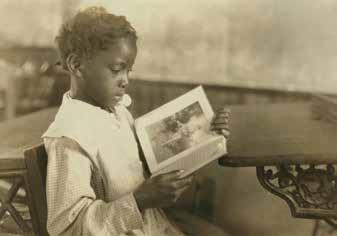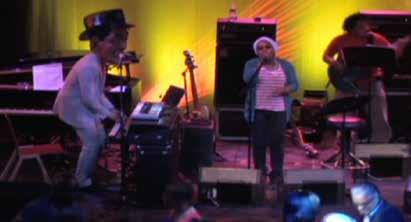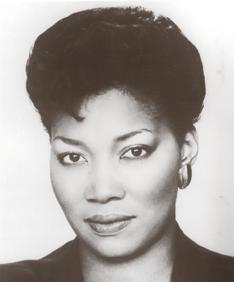FOCUS
HARLEM COMMUNITY NEWSPAPERS
Black Wall Street 1906-1921: Freed Slaves Built Wealthy and Thriving Communities which were destroyed by white mobs
W
By Maria Grazia CAVENAGHI
Harlem Community Newspapers | June 18. 2020
e are living in an historical, unprecedented moment of distress, anxiety and worldwide protests against police brutality and racial unrest. The fact that Trump has chosen to hold his first election rally on June 20th, one day after Juneteenth (June 19) a day celebrating the end of slavery, precisely in Tulsa, Oklahoma - that in 1921 was the scene of one of the worst race massacres in US history – denotes, to
12
say the least, a misguided disregard for both time and place and in the worst of hypothesis a calculated provocation. Neither of these possibilities are acts we would expect from the Commander in Chief, the person in charge of leading and uniting the country. But let’s step back in history. Most of us know that on June 19th 1865 US Army General Gordon Granger announced in Galveston, Texas that the Civil War was over and slavery had ended. What we don’t necessarily know is that many African Americans were not made aware that, in reality, Congress had passed the 13th Amendment, which abolished
slavery, six months earlier. So, slavery was now officially abolished…. but was it really? Freed slaves were never compensated for their stolen lives, their broken families, the free work produced, they were never given the opportunity of an equal start…they were never given the promised 4 acres and a mule. Notwithstanding the lynching, the forced segregation, the Jim Crow laws and the redlining they
maintained their struggle, only to achieve an illusion of integration. Often starting from scratch, African Americans still managed to build families, homes, farms, companies, make discoveries and inventions (oftentimes appropriated by whites) build and rebuild many thriving African American communities. The most well-known was located in Greenwood of Tulsa, Oklahoma and was named Black Wall Street. This wealthy community was invaded, burnt to the ground and destroyed more than once by angry white mobs who started to fear the ingenuity and resilience of ex slaves. Nevertheless by 1942 some 242 black busi-
nesses were thriving again in the Greenwood district. Next year will mark the 100-year anniversary of this terrible event so to better understand what happened in Tulsa, we talked to Mr. Michael Green - Actor, Producer and Director of the Shades of Truth Theatre - who has written a magnificent and informative play titled precisely ‘Black Wall Street’. What follows is an exclusive interview When was Black Wall
Street established and where did the name come from? Booker T. Washington, who was a frequent visitor, first referred to Tulsa in that term. It is mostly associated with what was arguably the most successful black community ever established in the history of the United States: Greenwood of Tulsa, Oklahoma, circa 1906 - 1921 When did you first learn about Black Wall Street, did you study that in school? I am glad you asked that question because, as a matter of fact, in school there was never mention of it, African American history wasn’t taught in depth at all.
I spent almost twenty years living in Houston Texas and had relatives from Tulsa Oklahoma and in fact had visited Tulsa on three occasions during the 80s… Never a mention of Black Wall Street. It would take a visit to New York City in 1994 where, after attending a gathering which featured lectures by John Henrik Clark and Dr. Ben Jochannan, a vendor handed me a VHS tape with the title of Black Wall Street. I’m
thinking…what kind of fantasy is this? But in the spirit of what I had just received from the two Doctors of African History, I purchased the tape. Needless to say, I was absolutely flabbergasted and blown away at what was revealed on it. How did Greenwood become so prosperous? After the Civil War, Negro and Native Americans were able to acquire land lots through the Dawes Act. Now, accounts differ as to exactly when Oil was first discovered in Oklahoma but by 1907, just before Oklahoma became a state, it produced the most oil of any state or territory in the US. And with that came the emergence of Tulsa as “the
Oil Capital of the World.” So, with oil and ingenuity and a little thing called segregation…Greenwood would rise to the top!!! But how did it get started? OW Gurley moved from Arkansas to Oklahoma in 1906 shortly after Tulsa was established as a City. He purchased 40 acres of land and resold most of it to other blacks. These tracks of land were named Greenwood after the town in Mississippi. OW Gurley became the new Township's first wealthy entrepreneur. Gurley started with a boarding house for African Americans. Then word began to spread about opportunities for blacks in Greenwood and men and families from all over the country flocked to the district. He would later be joined by a lawyer from Indiana named J B Stradford who moved to Greenwood and became a real estate mogul, investing and re-investing into the Town’s infrastructure. He built a luxury five-star ho-
tel that bears his name ‘The Stradford’. He believed that blacks had a better chance of economic progress if they pooled their resources. Both men had the vision to create something “for black people by black people”. This is a fascinating story, but just how successful was it? There are great discrepancies and debate as to how successful was the Greenwood District. The most popular depiction states that within a 36-block radius there were over 600 thriving black-owned businesses, including 21 Churches, 21 Restaurants, 30 Grocery Stores, and 2 Movie Theaters. They ran a Hospital, a Bank, and their own School System. A minion of black professionals; Lawyers, Doctors, Dentists, Nurses, Accountants, Bakers, Barbers, Butchers, Bricklayers, Plumbers, Domestics, Teachers, and other proud citizens lived in the beautiful homes constructed










